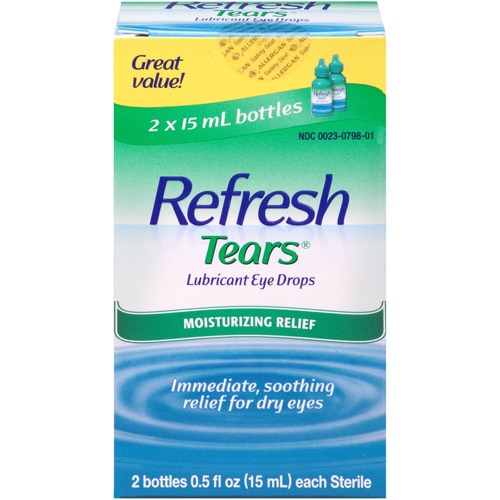[vc_row][vc_column][vc_column_text]The truth about tears is surprisingly complex as well as mysterious. As
Antoine de Saint-Exupery, the author of The Little Prince, says, “It is such a secret place, the land of tears.” But now, a growing body of research is bringing the land of tears to light. Turns out, crying has all kinds of health benefits, including stress relief, social bonding and eye health. Here’s everything you wanted to know about tears, but perhaps were too verklempt to ask.

Types of tears
Have you ever suspected, but not been able to articulate, that all tears are not equal. How are
tears shed cutting onions different from tears of searing grief? In fact, there are three kinds of tears.
- Basal Tears: These tears are always present in our eyes, providing a constant layer of moisture that keeps the eyes from drying out. They contain proteins and antibacterial substances that protect the eye.
- Reflex Tears: Produced in response to irritants like dust, smoke or onion fumes, reflex tears help wash away harmful particles and protect the eyes from injury.
- Emotional Tears: Triggered by feelings of sadness, happiness or stress, emotional tears contain higher levels of stress hormones and other chemicals compared to basal and reflex tears.
Where tears comes from
Throughout the vale of tears, theories abounded about where tears come from. According to Ad Vingerhoets, a professor at Tilburg University in the Netherlands and the world’s foremost expert on crying, “for centuries, people thought tears originated in the heart; the Old Testament describes tears as the by-product of when the heart’s material weakens and turns into water.
Later, in Hippocrates’ time, it was thought that the mind was the trigger for tears. A prevailing theory in the 1600s held that emotions—especially love—heated the heart, which generated water vapor to cool itself down. The heart vapor would then rise to the head, condense near the eyes and escape as tears.”
In 1661 a Danish scientist named Niels Stensen figured out where basal tears come from. They originate from the lacrimal gland inside your face, right above the outer corner of both eyes. It consistently secretes a fluid made from salt and water. When you blink, the fluid mixes with mucus and oil from another gland right along the edge of your eyelashes. Then it spreads the moisture evenly across the surface of your cornea. As the fluid drains through your tear ducts and into your nose, it keeps your eyes clean and moist day and night.
So why do we cry?
Science and pseudo-science have been rife with theories, some more plausible than others. One 1960’s view purported that humans evolved from aquatic apes and tears evolved to help us live in saltwater. But beginning with Stensen, the most popular theory was that tears keep the eyes moist. In the 1800s, Darwin thoughts emotional tears were “purposeless.”
But now, science has come round to seeing emotional tears with a more appreciative lens. An argument for the purpose of emotional tears is evolutionary: They’re a way to garner empathy and elicit bonding, a form of social glue. Tears don’t come only from sadness.
Nostalgia, happiness, anger, irritation and regret all serve as triggers for waterworks.
Another way tears function is as a way for the body to decompress from
intense emotion. The body experiences a swell of amplified emotion, such as hurt, and goes into fight or flight. But when the tears come, the body relaxes, and the heart rate slows down. Additional studies also suggest that crying stimulates the production of
endorphins, our body’s natural pain killer and “feel-good” hormones.
What about the people who don’t cry?
If tears are so important for human bonding, what does this say about people who don’t cry. Does it indicate a lack of social connection? According to Cord Benecke, a clinical psychologist and professor at the University of Kassel in Germany, it might. Conducting his research through therapy style interviews, Benecke found that non-crying people experienced more aggressive emotions, such as rage, anger and disgust, than people who cry.
Are emotional tears and reflex tears made of the same substance?
According to Dr. William Frey, of the Ramsey Medical Center in Minneapolis, who carried out groundbreaking crying research in the 1970s and 1980s, discovered that reflex tears and emotional tears had significant differences in their composition.
He found that reflex tears are 98 percent water, whereas emotional tears also contain stress hormones which get shed from the body through crying. It’s another reason why many people feel better after a good cry. Also of note: Emotional tears contain more protein than reflex tears, which makes them stickier. Emotional tears stay on your face longer and are more visible than others, thus a more effective way to signal internal distress.
So next time you get a lump in your throat, often a signal of impending tears, don’t try to hold them back Welcome the tears, the relief, the connection, and the emotional validation that tears can bring.[/vc_column_text][/vc_column][/vc_row][vc_row][vc_column][vc_text_separator title="Featured Products" border_width="2"][vc_row_inner equal_height="yes" content_placement="middle" gap="35"][vc_column_inner width="1/3"][vc_single_image image="175212" img_size="full" alignment="center" onclick="custom_link" img_link_target="_blank" css=".vc_custom_1716335310466{padding-right: 7% !important;padding-left: 7% !important;}" link="https://www.vitacost.com/theratears-nutrition-theratears-lubricant-eye-drops#"][/vc_column_inner][vc_column_inner width="1/3"][vc_single_image image="175209" img_size="full" alignment="center" onclick="custom_link" img_link_target="_blank" css=".vc_custom_1716335326306{padding-right: 7% !important;padding-left: 7% !important;}" link="https://www.vitacost.com/refresh-tears-lubricant-eye-drops-0-5-fl-oz-each-pack-of-2"][/vc_column_inner][vc_column_inner width="1/3"][vc_single_image image="175210" img_size="full" alignment="center" onclick="custom_link" img_link_target="_blank" css=".vc_custom_1716335342762{padding-right: 7% !important;padding-left: 7% !important;}" link="https://www.vitacost.com/theratears-nutrition-therapy-for-your-eyes"][/vc_column_inner][/vc_row_inner][/vc_column][/vc_row]




